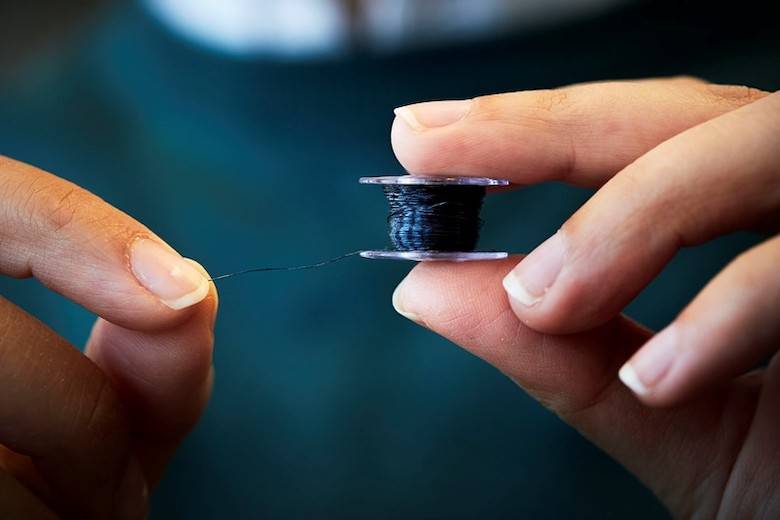New cellulosic thread for ‘sustainable’ e-textiles

A research team from Gothenburg’s Chalmers University of Technology has developed a cellulosic, electrically conductive thread, reportedly by using non-toxic, renewable and natural materials during the production process.
A doctoral student involved in the project, Sozan Darabi, said: “Miniature, wearable, electronic gadgets are ever more common in our daily lives. But currently, they often depend on rare or sometimes toxic materials. They are also leading to a gradual build-up of great mountains of electronic waste.
“There is a real need for organic, renewable materials for use in electronic textiles.”
While initial experiments used silk, electrically conductive cellulose threads were found to bear the most fruit in terms of generating a thermoelectric textile when sewn into fabric using a standard household sewing machine. At a temperature difference of 37 degrees Celsius, the textile was able to produce around 0.2 microwatts of electricity when heated from one side (by body heat, for example).
Chalmers’ researchers developed the cellulosic thread’s production process hand in hand with co-authors from Finland’s Aalto University, but it was the Swedish university’s subsequent experiments which made the thread electrically conductive by dyeing it with a conductive polymeric material.
Further research showed that the dyeing process gave the thread a record-high conductivity, while silver nanowires were found to boost conductivity to an even greater extent. The thread maintained its conductivity after several washes, professional body the Institution of Engineering and Technology reported.
Research lead and Chalmers professor, Christian Müller, commented: “Cellulose is a fantastic material that can be sustainably extracted and recycled, and we will see it used more and more in the future. When products are made of uniform material or as few materials as possible, the recycling process becomes much easier and more effective.
“This is another perspective from which cellulose thread is very promising for the development of e-textiles.”
Image: Chalmers University of Technology. Credit: Anna-Lena Lundqvist








